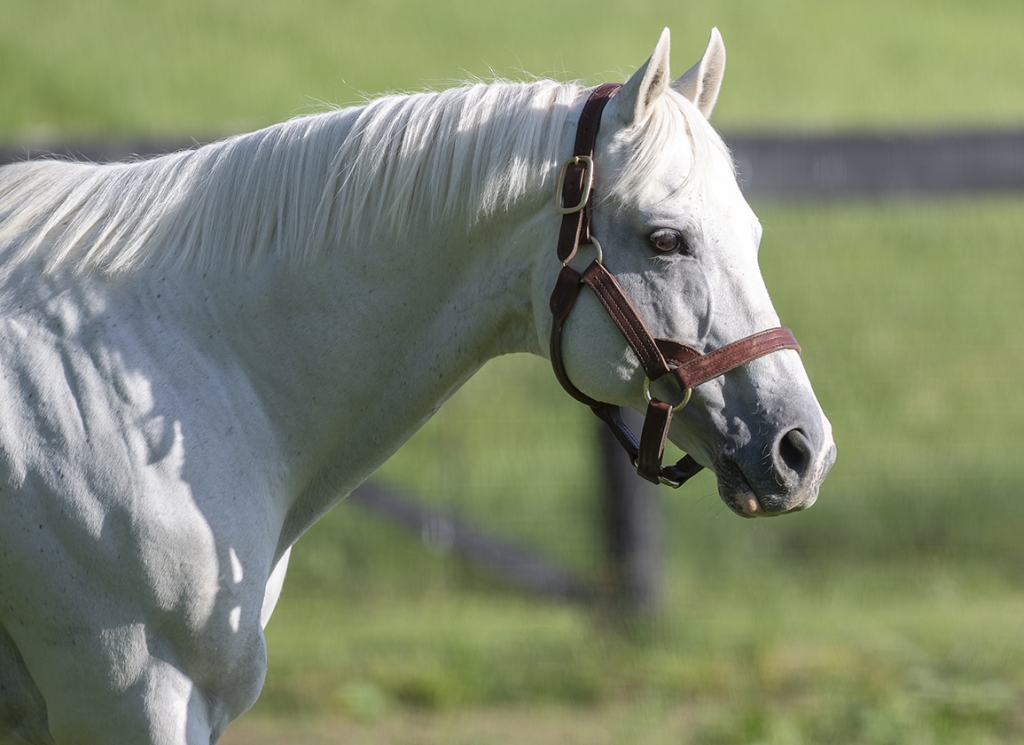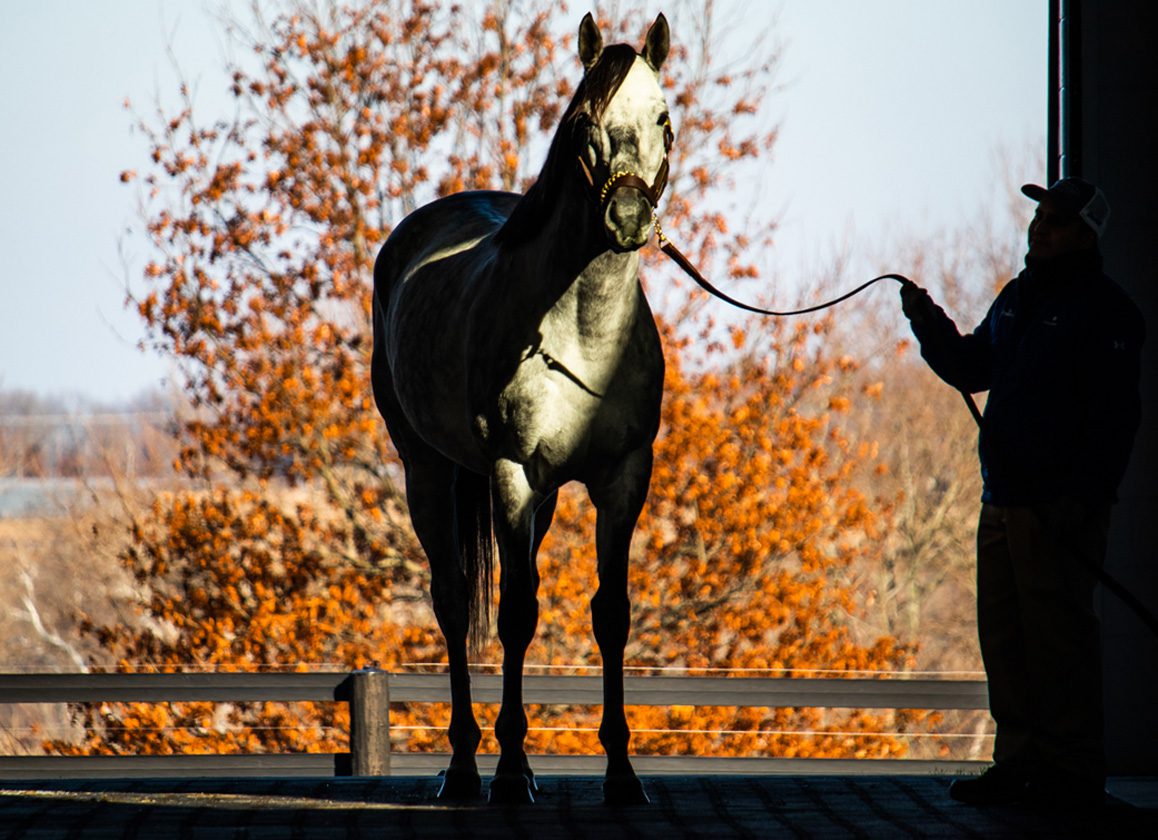By Chris McGrath
So, what's next? The plague of locusts? The only surprise is that the smoke filling the air at Belmont Park has drifted across the continent from Canadian forests, and didn't actually emerge from a widening fissure in the crust, crumbling daily, that appears to divide horsemen and their horses from the inferno.
Hopefully a reprieve of the GI Belmont S. might yet be extended to some other elements in what has become too relentlessly apocalyptic a narrative. In terms of what has been definitively established, our sport's macabre run of misfortune in recent weeks may owe as much to sulphurs exhaled from hell as to the difference between dirt and synthetic surfaces.
As a community, we obviously have a major challenge on our hands. But that's precisely why we need to avoid panicked, impulsive solutions in favor of calmly diligent, far-sighted leadership. Just because social media has empowered some pretty deranged minorities, we can't allow their disproportionate reach to pervert whole societal agendas.
It would seem pretty unarguable that American racing can benefit from a greater role for synthetics but let's not throw the baby out with the bathwater. Horsemen and handicappers alike have a legitimate stake in dirt racing–and, to be clear, that stake is not just financial but a matter of cultural identity–and there its long history can surely be extended by discovering and addressing any practices that undermine its sustainability. I suspect there's probably quite a crossover between those who are resisting HISA and those who can't abide synthetics–and these are the guys who really need to smell the coffee. If you want to keep dirt racing, then call your dogs off HISA.

Tapit | Sarah Andrew
You couldn't ask for a better context to ponder these issues than the 155th running of a race designed to showcase precisely those genetic assets that equip the Thoroughbred to deal safely with tasks set before an increasingly (and, for the most part, properly) vigilant audience. And that's not just because it asks for the robustness to carry speed for a distance that is nearly freakish, in the American theatre, but also because historically many runners would already have contested two demanding races in the preceding five weeks.
Though it is the trainers who are driving corrosion of the Triple Crown, they implicitly transfer the culpability to the breeders. Hopefully our collective endeavors to identify and resolve vulnerabilities in the Thoroughbred will include analysis of the relative incidence of breakdowns (and not just catastrophic ones) in the stock of different stallions. If so, we might learn whether there's any scientific substance to our nervousness about horses today being “too fast to last.” For now, however, we can only follow our instincts and conscience. But it's certainly striking that Germany should have achieved such a sensational impact with its bloodlines–far outrunning its troubles as a racing economy–by paternalist strictures in favor of soundness and competitive longevity. And even the most stubborn commercial breeders in Europe and America must acknowledge that Japan isn't doing too badly, either, in prizing the same assets.
Happily, the 50th anniversary of Secretariat's Belmont has drawn a perfectly presentable field in both quality and intrigue. With four other Kentucky Derby graduates meanwhile siphoned to the GIII Matt Winn S., it's clear that the Classic taking all the punishment from trainers right now is the Preakness. But how edifying that the Belmont–such an outlier, in the numbly repeating wheelhouse of most American trainers–should retain sufficient prestige to tempt a juvenile champion who'd be well within his rights to find a more obviously congenial way of regrouping from his recent vexations.
Quite a leap of imagination is required to picture a speed brand like Violence siring a Belmont winner, but his grandsire El Prado (Ire) sits comfortingly opposite Arch (behind damsire Blame) in the pedigree of Forte. So you never know, and clearly the runner-up has meanwhile upgraded his white-knuckle GI Florida Derby.
But his second dam was fast (stakes winner at 6f) and will need to have smuggled through some stamina from her own mother. That's by no means impossible, as she was by Seattle Slew and her half-sister by a speedier agency (Storm Cat) unites the pedigrees of 12-furlong Classic winners Contrail (Jpn) (Deep Impact {Jpn}) and Essential Quality (Tapit), as third and second dam respectively.
Essential Quality, of course, was his sire's fourth Belmont winner, a unique distinction in the modern era. The only precedent, Lexington, had emerged from a forgotten era of four-mile heats and matches to prove an ideal influence for what was then a newfangled type of sprinting in a single, congested dash. The dial has since turned so far that the Belmont stands out as a curio, a positive marathon. Breeders of the 21st Century must count themselves blessed, then, to retain access to such a wholesome influence in the evening of his career.
Astoundingly, this time Tapit himself accounts for two of the nine runners, while no fewer than FOUR others are out of his daughters.
The Gainesway patriarch's Belmont record, including in a couple of desperate finishes, is all about the ability to carry speed under duress. That is supposed to be a dirt hallmark, though it was exported to revolutionary effect by Northern Dancer's sons in Europe, where the dynasty's principal heir Frankel (GB)-having himself always run just like a dirt horse-is now siring stock that similarly just keep going.
Actually, there's a case for saying that Tapit is a far more effective turf sire than his stats might imply, given that only his most disappointing foals would even try the weeds. He's certainly been disgracefully untested in Europe. Of just nine Tapits started by British trainers over the last decade, seven are winners and three stakes performers. But whatever the future may hold, in terms of racing surfaces, it looks as though he will just have to settle for being the richest sire in the history of the American sport.
Into Mischief is almost certainly going to run him down, in time, but Tapit started Belmont weekend on a statistical brink–$198 million in progeny earnings, from 999 winners and 99 graded stakes winners–that surely beckons him towards another date with Belmont destiny. And if he's going to make history, then he's also the type of horse that can give us a future.
Not a subscriber? Click here to sign up for the daily PDF or alerts.







